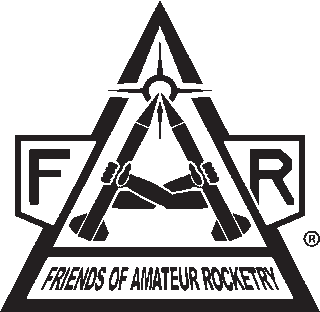DPF stands for a Dollar Per Foot
TCPF stands for Ten Cents Per Foot
The Rules are as follows:
- Open to US and Canadian Universities and Colleges only
- No High-Schools
- All team members must be current students or has graduated in the school year of the launch
- Each team must have a minimum of four team members
- Single-Stage Rockets Only
- No dropping tanks or other portions of the rocket
- Liquid Propellants Only
- No solids or hybrids or monopropellants.
- All DPF contestants must use liquid oxygen as an oxidizer.
- All TCPF contestants must use nitrous oxide as an oxidizer.
- Must use Two-Stage Recovery
- Deploys drogue-parachute at apogee
- Deploys main-parachute below 1000-feet
- Deploying the main parachute at apogee will disqualify the team.
- Use two independent recovery electronics and battery
- Recovers Successfully
- Returns on main parachute.
- Returns with nosecone and drogue parachute tethered to the rocket.
- Sustains only minor damage.
- Fin broken off on landing.
- Rocket engine nozzle damaged on landing.
- No structural damage.
- The rest of the rocket must be in flyable condition.
- Rocket must have GPS/Telemetry to enable easy location of your rocket when it lands.
- If you can't find your rocket, you will not be given the DPF or TCPF money.
- Rocket must be rail or tower launched.
- No active control systems
- No movable fins
- No canards
- No TVC
- Launches must be performed at FAR Site.
- Launches must be attempted on a normal FAR launch Saturday.
- Some exceptions can be made due to bad weather or high attendance on FAR Saturdays
- Altitude must be determined by two commercially available recovery electronics.
- The altitude must be determined by the lowest altitude measured of the two.
- The rocket or rocket engine have not received the TCPF or DPF award before.
- Must meet FAR/Mars safety requirements.
- See FAR-Mars Safety Form
- FAR-Mars Safety Form must be presented before rocket is placed on the launch rail or tower.
- For DPF To compete, the team must agree to provide FAR with a complete set of the rocket design plans so that they may be shared with other student groups-our mission is rocket education! If another student group successfully builds and launches this design, they will receive the one-dollar-per-foot prize AND the original design team will also receive the same one-dollar-per-foot amount!
- Launches requiring a new FAA COA.
- A predicted altitude over 250,000-feet.
- Launch team is responsible to acquire a new FAA COA.
- COA must be coordinated with FAR.
- Copy of COA must be sent to FAR two-weeks before launch.
- Registration
- Register through FAR Competition Registration webpage.
- Register two-weeks before launch.
- This registration does not substitute for a launch request.
- File a Launch Request two-weeks before launch.
- Currently there is no end-date for this contest.
- Register through FAR Competition Registration webpage.
Awards:
- DPF is $1 per foot of altitude above the end of the launch rail or tower.
- Payable to the launch team's school account
- TCPF is $0.10 per foot of altitude above the end of the launch rail or tower.
- Payable to the launch team's school account
